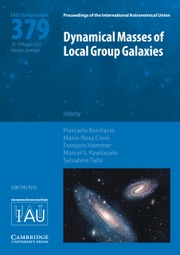No CrossRef data available.
Article contents
Starspots and spin-orbit alignment in the WASP-4 exoplanetary system
Published online by Cambridge University Press: 10 November 2011
Abstract
Core share and HTML view are not available for this content. However, as you have access to this content, a full PDF is available via the ‘Save PDF’ action button.
We present the photometric analysis of 4 transits of the exoplanet WASP-4b, obtained with the Baade 6.5m telescope, one of the two Magellan telescopes at Las Campanas. The light curves have a photometric precision of 0.5 mmag and a time sampling of 30s. This high precision has allowed us to detect several “spot anomalies”: temporary brightenings due to the occultation of a starspot on the transit chord. By analyzing these anomalies we find the sky-projected stellar obliquity to be λ = 1°+12°−14°. The small value suggests that the planet migration mechanism preserved the initially low obliquity, or that tidal evolution has realigned the system.
Information
- Type
- Contributed Papers
- Information
- Copyright
- Copyright © International Astronomical Union 2011
References
Dittmann, J. A., Close, L. M., Green, E. M., & Fenwick, M. 2009, ApJ, 701, 756CrossRefGoogle Scholar

